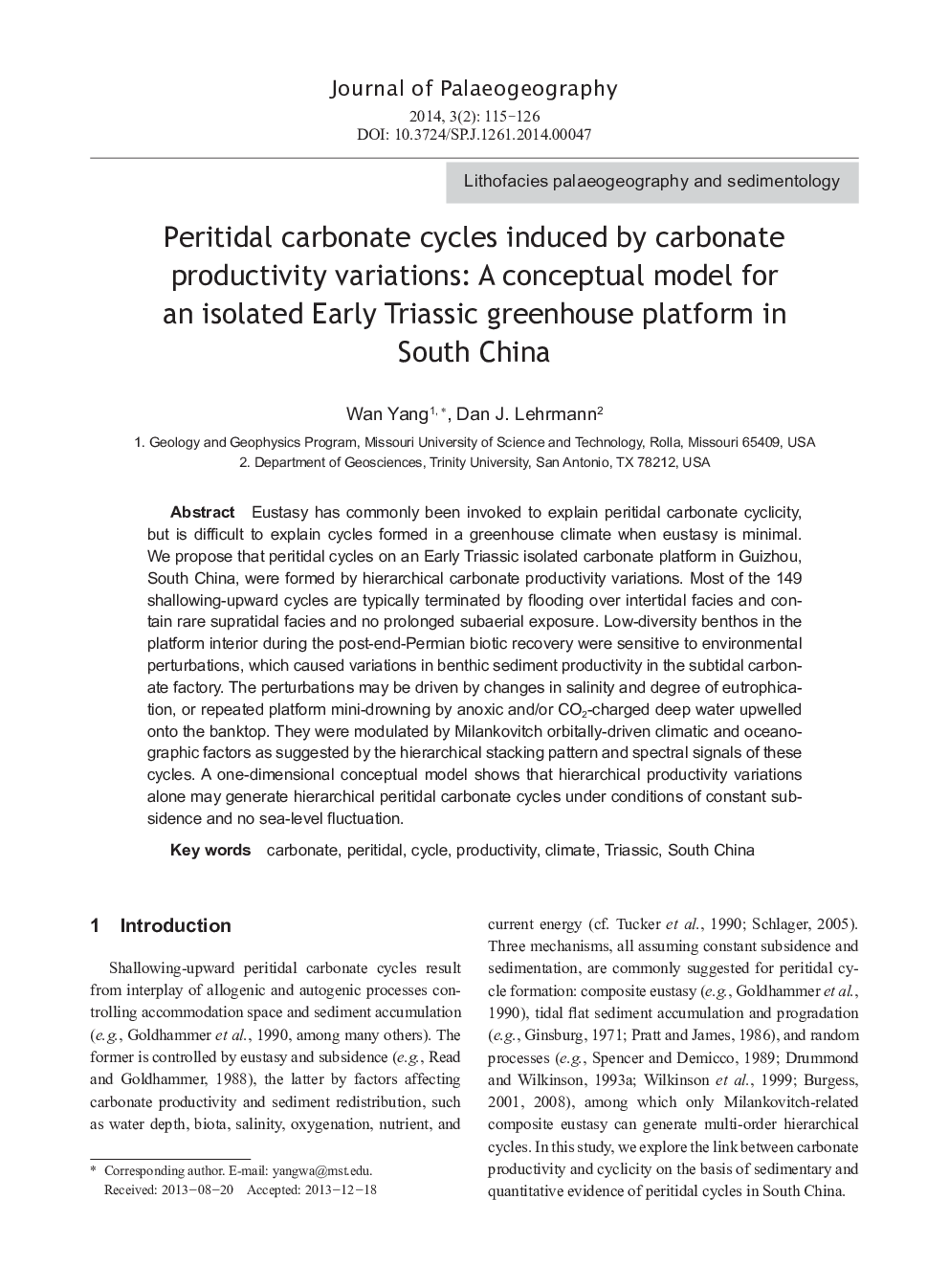| کد مقاله | کد نشریه | سال انتشار | مقاله انگلیسی | نسخه تمام متن |
|---|---|---|---|---|
| 4581049 | 1333677 | 2014 | 12 صفحه PDF | دانلود رایگان |
Eustasy has commonly been invoked to explain peritidal carbonate cyclicity, but is difficult to explain cycles formed in a greenhouse climate when eustasy is minimal. We propose that peritidal cycles on an Early Triassic isolated carbonate platform in Guizhou, South China, were formed by hierarchical carbonate productivity variations. Most of the 149 shallowing-upward cycles are typically terminated by flooding over intertidal facies and contain rare supratidal facies and no prolonged subaerial exposure. Low-diversity benthos in the platform interior during the post-end-Permian biotic recovery were sensitive to environmental perturbations, which caused variations in benthic sediment productivity in the subtidal carbonate factory. The perturbations may be driven by changes in salinity and degree of eutrophication, or repeated platform mini-drowning by anoxic and/or CO2-charged deep water upwelled onto the banktop. They were modulated by Milankovitch orbitally-driven climatic and oceanographic factors as suggested by the hierarchical stacking pattern and spectral signals of these cycles. A one-dimensional conceptual model shows that hierarchical productivity variations alone may generate hierarchical peritidal carbonate cycles under conditions of constant subsidence and no sea-level fluctuation.
Journal: Journal of Palaeogeography - Volume 3, Issue 2, April 2014, Pages 115–126
